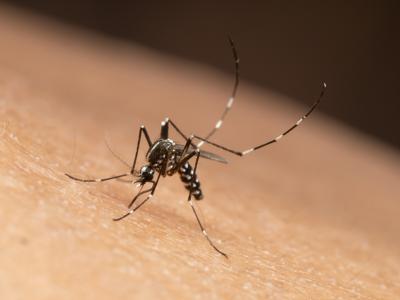Experts differ over Cochrane antiviral findings
A Cochrane review that included published studies as well as unpublished drug-company data for the two most common antiviral drugs for flu—oseltamivir (Tamiflu) and zanamivir (Relenza)—found that they can shorten symptoms by about two thirds of a day but can cause side effects. The investigators also found few data to support stockpiling the drugs for pandemic or seasonal flu, according to reports today in BMJ.
The findings were similar to what the group found in a 2012 meta-analysis that included only published data, but the US Centers for Disease Control (CDC) and several leading flu experts took issue with the group's methodology and conclusions.
The review included 43 trials on oseltamivir and 54 on zanamivir and was restricted to randomized controlled trials (RCTs), which are considered the gold standard of evidence. The analysis found that oseltamivir shortens flu symptoms by 0.7 days (from 7.0 to 6.3 days) and zanamivir by 0.6 days (from 6.6 to 6.0 days).
The team found no evidence of a reduction in hospitalizations or serious flu complications but calculated that oseltamivir increased the risk of nausea and vomiting in adults by about 4% and in kids by 5%. They also found a 1% increase in psychiatric events when oseltamivir was used to prevent influenza.
The authors recommend changing antiviral guidance in view of their results.
In a statement today, however, the CDC pointed out that the Cochrane review, because of its focus on only RCTs and therefore on only outpatients with mild flulike illness, did not address whether the antivirals reduce complications of severe flu, which is a main concern for both pandemic and seasonal flu. The RCTs also didn't address key risk groups like the elderly, pregnant women, and those with underlying conditions, the agency said.
The CDC also said the review did not consider data "from an abundance of observational studies," which have limitations but can provide useful data. "Observational studies are especially important when data from RCTs are unavailable to address questions relevant to specific outcomes (like severe disease) or to certain high-risk groups," the agency said.
The CDC said its guidance on antiviral drugs for flu will not change because of the report.
Several flu experts expressed similar concern over the Cochrane findings in an NBC News story today. "We know that antivirals saved lives during the (2009 H1N1 swine flu) pandemic, and we risk losing one of the few weapons we have because of overly negative publicity," said Peter Openshaw, MBBS, PhD, of Imperial College London.
Apr 10 BMJ study on oseltamivir
Apr 10 BMJ study on zanamivir
Apr 10 BMJ press release
Jan 19, 2012, CIDRAP News story on previous Cochrane review
Apr 10 CDC statement
Apr 10 NBC News story
Live attenuated H7N9 vaccine looks promising, researchers say
US scientists report that they have developed a live attenuated influenza vaccine (LAIV) against the H7N9 virus that looks promising enough for testing in humans.
In a report yesterday in the Journal of Virology, the scientists say they created the vaccine by joining the hemagglutinin (HA) and neuraminidase genes from an H7N9 virus to the six internal genes from a cold-adapted flu virus called A/Ann Arbor/6/60. The researchers are from MedImmune, which makes live attenuated flu vaccines, and the National Institute of Allergy and Infectious Diseases.
The reassortant virus grew poorly in eggs, but by growing it repeatedly in eggs and mammalian cells, the scientists identified two HA mutations that improved the yield in eggs 10-fold without affecting the virus's antigenicity. They also found that these same two HA mutations improved the growth properties of an inactivated H7N9 vaccine.
When the live vaccine was tested in ferrets, it completely protected them from the targeted H7N9 strain and protected them almost as effectively from an H7N7 virus. "Therefore, this H7N9 LAIV candidate has been selected for vaccine manufacture and clinical evaluation to protect humans from wt [wild-type] H7N9 virus infection," the report says.
Apr 9 J Virology abstract
About 3% of blood donors in French Polynesia have Zika virus
About 3% of blood donors in French Polynesia, which is experiencing a large outbreak of Zika virus infections, tested positive for the virus, according to a report today in Eurosurveillance.
Investigators tested samples from 1,505 donors by polymerase chain reaction, finding Zika virus in 42 of them, or 2.8%, which the authors called "unexpectedly high." They also noted that testing for the virus as well as for dengue virus, which is also circulating in the country, has slowed the supply of available blood for transfusions.
"This report serves as a reminder of the importance of quickly adapting blood donation safety procedures to the local epidemiological context," they conclude. French Polynesia has had about 28,000 Zika cases, affecting about 11% of the population. Zika virus, as well as the viruses that cause dengue, Japanese encephalitis, yellow fever, and about 70 other diseases, is a flavivirus.
Apr 10 Eurosurveillance report












